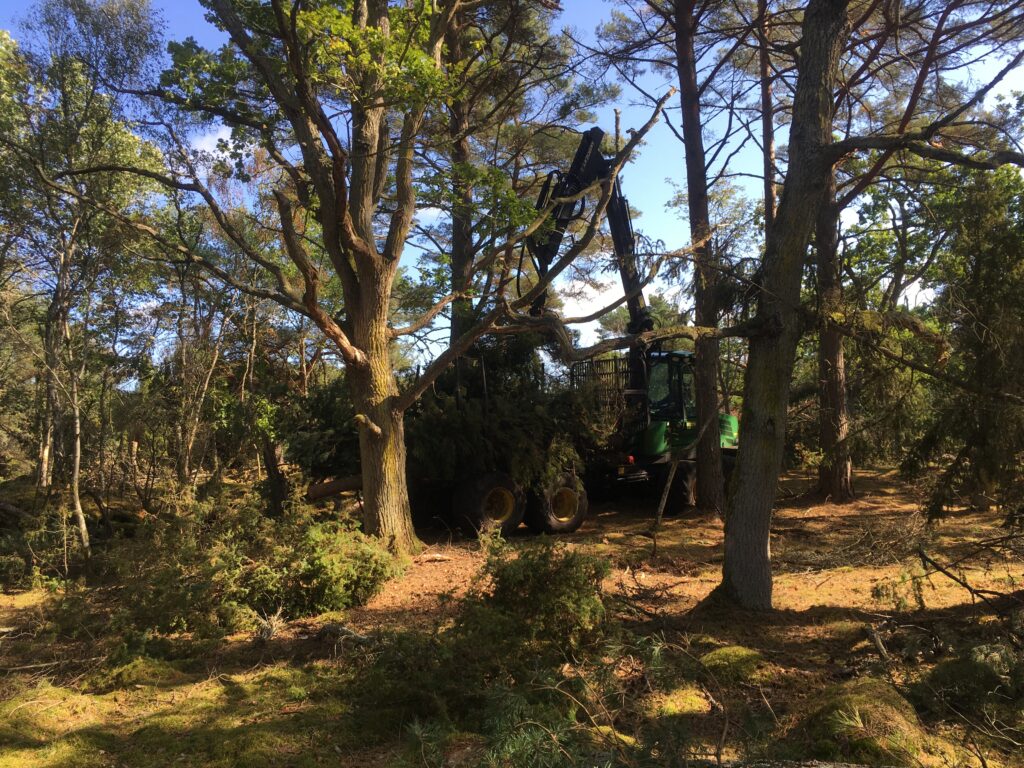Haglö
Haglö is mostly made up of oak pastures, as well as some rocky areas, and has long been grazed. Here, almost only juniper were felled. Much of the island consists of dense, almost impassable juniper stands. Scrubby, “ugly” junipers growing along the ground were removed. Smaller numbers of solitary junipers and large groups of bushes were left. Glades were extended and new ones created, and clearing was done around the oaks. Some spruce and younger oaks were felled; the trunks were left in the area but branches were removed. The result was a pasture with varied canopy cover. Because there was still grass left on most of the ground, the results were very good; in most places it looks as if it has always been as open as it is now.
Tromtö islands
The island of Östra Råholmen was not particularly overgrown because it had been grazed in recent years and the grass layer was still present on much of the island. For this reason, the entire restoration of the island was done during this measure. The rejuvenation consists almost exclusively of oak, which means there are lots of young oaks on the island.
On the islands of Västra Råholmen and Ringholmen, the overgrowth had advanced much more. A lot of beech had grown up and the grass cover had disappeared, except for in patches and in small glades.
On these two more overgrown islands, restoration was done as a first step towards the final result. The plan is to do more work in a couple of years when the trees have got accustomed to the more open conditions. Also, clearing will have to be done around more young oaks, to create more broad-crowned trees.
With restoration, the most urgent issues were addressed: beeches that had grown up into the crowns of the old oaks were felled, and glades where there was still some grass and flowers were enlarged, to give these plants room to expand. A large number of beeches were ringbarked, firstly to create dead wood, and secondly to slow the clearing process around the oaks a little. Also, dead wood was left on the site, in the form of high stumps and fallen trees.
Conclusions and valuable experiences
The most important conclusions from the restoration work on the islands concerns the importance of planning and preparation.
Documentation for use in procurement must be well thought through, and clearly state who is responsible for what. Engaged and flexible contractors are also important, to ensure that the work proceeds smoothly and the final result is good. If numerous contractors are involved, coordination between them is important, for instance so that the manual work is done in a way that facilitates for the contractor operating the forwarder. A long-term approach and the funding from the Life project mean that we “dared to” address these areas, and the experiences have enabled us to continue implementing similar measures in future. Because restoration through Life Bridging the Gap is a first step on two of the islands, we need to return within a few years in order to save the old oaks and so that rejuvenation can get under way.

